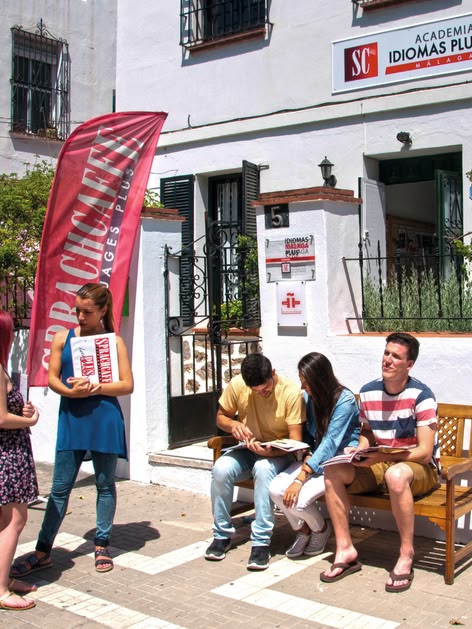Present perfect tense in Spanish: Formation, usage and examples
The present perfect is a verb tense used in Spanish to talk about actions or situations that have relevance in the present and are connected to the past. It is formed by using the verb "haber" in the present tense plus the past participle of the verb we want to conjugate.
The present perfect in Spanish is a valuable linguistic tool that allows us to express connections between past actions and the present, as well as to describe life experiences and recent events.
The Spanish present perfect at a glance
The present perfect tense is one of the most used verb tenses in the Spanish language, and its correct mastery is essential to express actions and experiences that have a direct relevance in the present, but are linked to the past. It is a compound verb tense, that is, it is formed by combining two elements: the verb "haber" conjugated in the present tense and the past participle of the verb to be conjugated. Through the present perfect tense, we can describe a wide variety of situations, from past actions with a connection to the present to life experiences and events that have recently taken place.
Formation of the present perfect tense in Spanish
The structure of the present perfect tense is relatively simple. First, we must be clear about how to conjugate the verb "haber" in the present tense for each personal pronoun, and then, conjugate the verbs in the past participle, depending on their ending, which can be -ar, -er or -ir. Once we have conjugated both the verb haber and the verb we want to use, we combine them and as a result we have the present perfect.
Conjugation table
| Personal pronoun | Verb "haber" | Verbs ending in -ar such as hablar | Verbs ending in -er such as comer | Verbs ending in -ir such as vivir |
|---|---|---|---|---|
| Yo | he | hablado | comido | vivido |
| Tú | has | hablado | comido | vivido |
| Él / Ella / Usted | ha | hablado | comido | vivido |
| Nosotros / Nosotras | hemos | hablado | comido | vivido |
| Vosotros / Vosotras | habéis | hablado | comido | vivido |
| Ellos / Ellas / Ustedes | han | hablado | comido | vivido |
Explore the world and improve your Spanish at the same time! Learn with Sprachcaffe in an international group and live the adventure of a lifetime in Malaga, Madrid, Barcelona or Havana!
Uses of the present perfect tense in Spanish
The present perfect is used in a variety of contexts and situations. One of the most common uses is to refer to past actions that have relevance in the present. When we use the present perfect in this sense, we do not specify the exact time when the action occurred, but focus on the consequence or connection it has with the present.
For example, if we say "I visited Spain this summer," we are not indicating the exact day or month of the trip, but rather we want to express that we have been to Spain at some point in the past and that experience has implications or relevance to the present. Perhaps that experience has given us greater knowledge about the country, or perhaps we are sharing anecdotes related to our trip.
Another use of the present perfect tense is to talk about life experiences. In this case, we use the verb tense to describe events that someone has experienced throughout their life up to the present moment. For example, "She has worked as a teacher for five years." Here, the present perfect allows us to focus on the experience accumulated so far, highlighting the fact that she has experience as a teacher.
In addition, the present perfect tense is also used to refer to actions that have occurred recently and are related to the present. In these situations, time expressions such as "today", "this week", "this month", etc. are often used. For example: "We were late for the meeting". In this case, the fact of being late is linked to the present, since it affects the current situation of the meeting.
Examples of the present perfect in Spanish
- Yo he viajado a muchos países.
- Ella ha estudiado para su examen.
- Hemos comido en ese restaurante antes.
- ¿Has visto esa película?
- Han vivido en esta casa desde 2010.
Differences between the present perfect and the preterite perfect in Spanish
It is important to note that, in Spanish, the present perfect and the preterite perfect can often be confused due to their similar structure. However, the fundamental difference lies in the temporal and contextual focus. While the present perfect focuses on past actions or situations that have a connection to the present, the preterite perfect simply points out that an action has occurred at an earlier time without emphasizing its relation to the present.
Let's look at the main differences:
1. Temporal approach:
- Present perfect: The present perfect focuses on actions or situations that have relevance in the present, but are linked to the past. It is used to describe actions that have occurred at a non-specific time in the past and that have consequences or implications in the present. In this verb tense, the speaker highlights the connection between the past and the present moment.
Example: He viajado a muchos países. (Enfocado en la experiencia de viajar hasta el presente).
- Pretérito perfecto compuesto: The preterite perfect compound is used to refer to actions that occurred in the past, but without establishing a direct connection with the present. In this case, the speaker simply reports that the action has been completed at some time prior to the present moment, without highlighting its current relevance.
Example: He viajado a muchos países. (Enfocado en el hecho de haber realizado la acción en el pasado, pero sin indicar si tiene una conexión específica con el presente).
2. Context and use:
- Present perfect: It is used to describe past actions or situations that are directly related to the present. It is common to use this verb tense to talk about life experiences, recent events or actions that have relevance in the present moment.
Example: Hemos comido en ese restaurante antes. (La acción de comer en ese restaurante en el pasado tiene una conexión con el presente, quizás porque queremos mencionar que ya conocemos ese lugar).
- Pretérito perfecto compuesto: It is used to express past actions that have been completed at some point in time prior to the present, without focusing on the direct relationship with the present moment.
Example: Comí en ese restaurante ayer. (Simplemente se informa que la acción de comer en ese restaurante ocurrió en el pasado, sin mencionar su relevancia en el presente).
In summary, while the present perfect focuses on past actions that have relevance in the present and is formed with the verb "haber" in the present tense, the present perfect compound is used to refer to past actions completed at a time prior to the present and is formed with the verb "haber" in the past perfect tense and the past participle of the verb. In most cases, the present perfect is more common and used in current Spanish.



